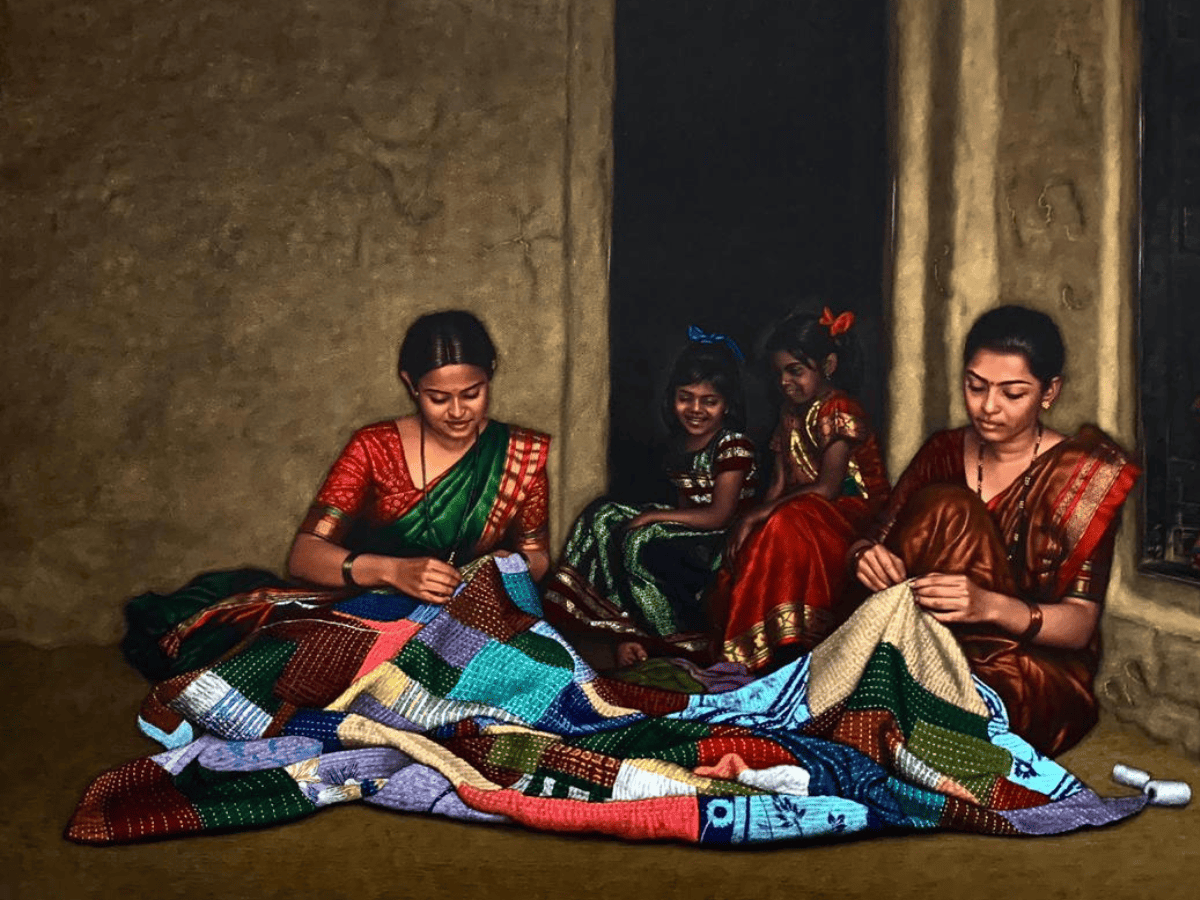
Latur: The humble traditional quilt “godhadi” has become an assured source of livelihood for women in some remote villages of Maharashtra’s Latur district.
A project, which was started in 2017 on an investment of Rs 50,000 by the self-help group Ruma, short for rural Maharashtra, is now providing women a monthly income of Rs 8,000, an official said.
What began as a small enterprise has since grown to employ 35 women in the age group of 18 to 60 years (some of them speech and hearing impaired) from Ansarwada and surrounding hamlets in Nilanga tehsil.
Godhadi, the main product of the self-help group, is hand sewn by women by layering colourful cloth scraps to make beautiful patterns.
The project came into being on March 8, 2017 with an aim to provide women of Ansarwada steady wages and keep the traditional handicrafts alive, Ruma project president Rukmini Pastalge said.
The project was started under the guidance of one Madhuvanti Mohan, who was working with a few NGOs in the district, she said.
The women who are part of the collective have been keeping the dying art of quilting alive with their new and innovative designs, an official from UMED Rural Livelihood Mission said.
Apart from colourful godhadis, the women also make cloth toys and bags, he said.
UMED Rural Livelihood Mission has been extending support to the self-help group by providing a platform to showcase the handcrafted creations at exhibitions, he said.
At least 15 small and major exhibitions were organised in the last four years and Ruma’s ‘godhadi’ even went on to win an award in one of them, the official said.
“We are making efforts to sell our godadhis abroad. We want to make our products on par with handicrafts from West Bengal, Punjab and Jammu & Kashmir,” Pastalge said.
The quilts have received a good response from online sales as well, but most of the products are sold by word of mouth or during exhibitions, she said.
The collective procures raw materials (cloth scraps) from different parts of the country or receives discarded scraps in the form of donations from factories, she said.
